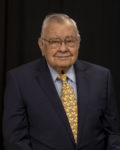
Rita E. Garwood,
Editor-in-Chief,
Monitor
It was 1972 and Bruce Kropschot had recently become CFO of the largest designer and builder of hospitals in the United States. The owner was looking to diversify the business and Kropschot began searching for businesses that might complement or utilize the strengths of the existing organization.
“I quickly decided that one area that we might diversify the company into was the leasing of hospital and other medical equipment,” Kropschot says. As he began looking for equipment leasing companies to acquire, the best opportunity he discovered was with Eastern Industrial Leasing based in Philadelphia. The closing of the sale marked the start of Kropschot’s 51-year career in equipment leasing.
Kropschot became the liaison between Eastern and its parent company, and the president of the recently acquired leasing company reported to him. As a result, Kropschot spent a lot of time in Philadelphia learning from the company and meeting with its bankers. One of those bankers was Jerry Parrotto, who went on to become the

second publisher of Monitor.
“I also, very early on, was in our Philadelphia office when Mike Molloy made a call to explain what he was doing with the Monitor and seeking business from our equipment leasing company for advertising in the Monitor and utilizing his services in recruiting new employees,” Kropschot says of his initial introduction to Monitor and Molloy, its founder.
After rebranding the company to HBE Leasing and overseeing it until 1980, Kropschot decided that he wanted to own an equipment finance company. While scouring sunny San Diego for leasing companies, an opportunity emerged to buy out a co-owner of suburban Detroit-based Master Lease Corporation, which Kropschot decided to take.
“It was just at the time when the interest rates were starting to escalate and the economy was doing very poorly,” Kropschot says. “Detroit, dependent upon the auto industry, had very high unemployment. In 1981, the prime interest rate hit 21.5%, and our leasing company had to pay more than that, so it was a very difficult time to be in the equipment leasing industry.”
Around the same time, Philadelphia-based AAMCO Industries decided to enter the equipment leasing industry and sent letters to 128 leasing companies expressing interest in an acquisition. AAMCO was initially negotiating with another company, but when that deal fell through, Master Lease became the top contender.
“We put a deal together that allowed us to have access to a very cash rich company, which was of great value to us since we were paying as much as 25% interest on loans secured by our leases,” Kropschot says.
Kropschot and his business partner each kept 10% of Master Lease as an incentive to grow the business for AAMCO. After his partner retired,
Kropschot continued his role of president and accepted AAMCO’s desire to relocate the leasing company to Philadelphia.
Over the years, Kropschot and his team grew the small-ticket, vendor-oriented company from 25 employees in 1981 to more than 400 in 1986.
After fulfilling his five-year employment agreement, Kropschot sold his 10% interest in the company for more than the valuation of 40% in the initial sale. Master Lease continued to thrive in the industry after being acquired by Tokai Bank and later De Lage Landen in the 1990s. Today, DLL is the largest vendor leasing company in the U.S.
“Philadelphia has been important for me,” Kropschot says. “Not only did I acquire a company in Philadelphia, a company in Philadelphia acquired my business, and after I left Master Lease, I started my new business in Philadelphia.”
In 1986, Kropschot struck out on his own after deciding the industry needed an investment banking firm that specialized in helping leasing companies be acquired.
“When we sold Master Lease, we couldn’t find any investment bankers that really understood our business,” Kropschot says.
And with that, Kropschot Financial Services was born. Given his activity in industry associations, Kropschot knew many people in the sector, many of whom were independent lessors.
“There were a lot of buyers and there were a lot of independent companies who had been formed in the ‘70s and their owners were now ready to cash in their chips or take some of the money off the table by finding a buyer to take control of them,” Kropschot says. “And it was a good time for M&A in the equipment leasing and finance industry. I hit it at the right time, I publicized my completed deals extensively with advertisements in the Monitor and it worked — it brought in a lot of business.”
Kropschot stuck with the M&A game and has been instrumental in the sale of more than 200 equipment finance companies. In 2008, he merged his practice into The Alta Group. Beyond the digitization of some aspects of the process, he says equipment finance M&A hasn’t changed much over the years.
The biggest lesson Kropschot has learned in his career is the value of the relationships built through the equipment finance industry’s associations. For him, hard work has been the key to his success. “I work very hard, and I think that’s something important for everybody to keep in mind,” he says. “It helps to have brains, but you don’t have to be the smartest person in the world if you work a lot harder than the smartest person.”
ABOUT THE AUTHOR: Rita E. Garwood is editor in chief of Monitor.
No categories available
No tags available
2 Replies to “Dedicated to Hard Work: How Kropschot Became an M&A Guru”
Bruce:
it’s great to hear you are well and still going strong. You have always been a positive influence on the leasing industry.
Great interview with a dedicated and highly respected industry professional. Bruce is a class act and this is a great interview.